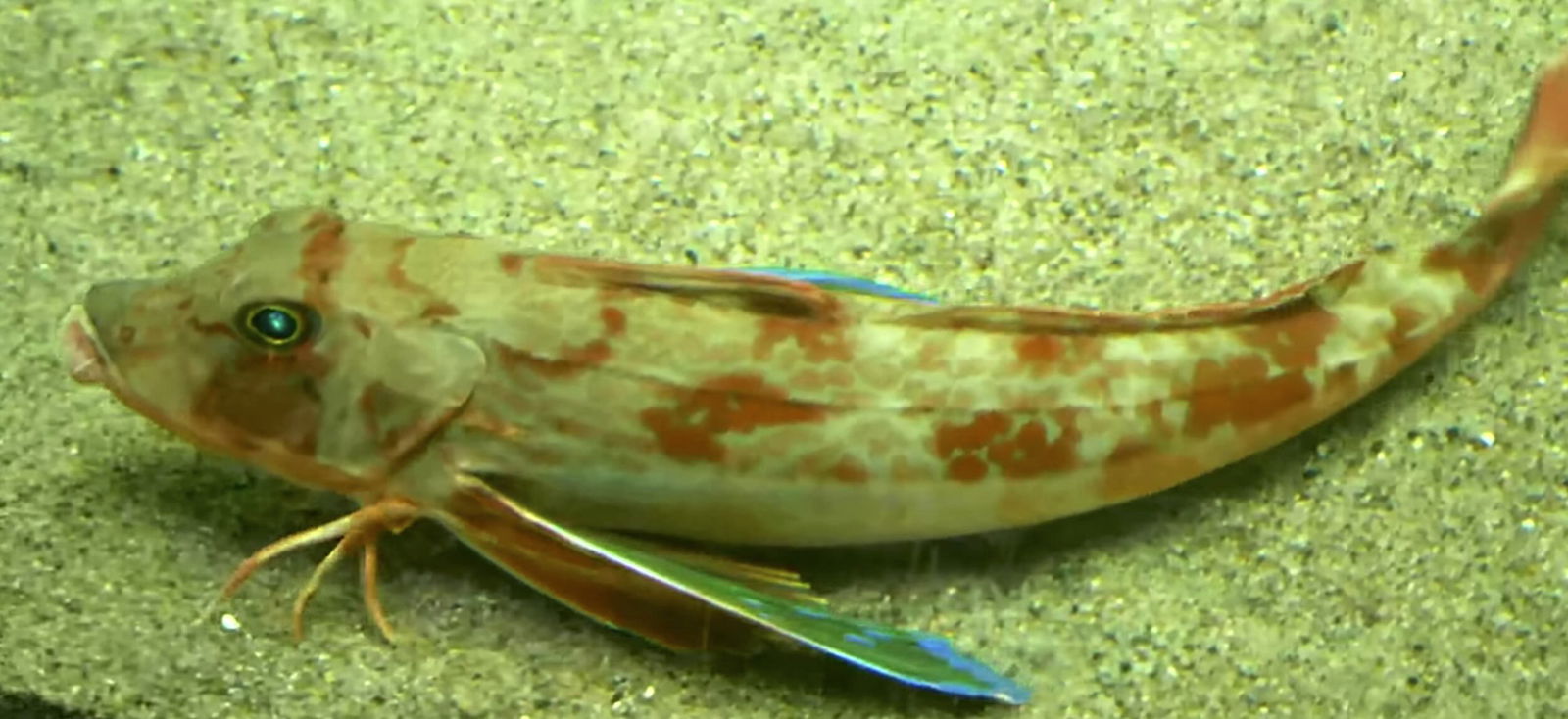The driving forces of evolution have created some interesting attributes that animals use to survive. From a peacock’s tail to the anteater’s tongue, each of these appendages serve a unique purpose. For sea robins, a remarkable family of fish, their crab-like feet allow them to “taste” the ocean floor in search of food. In two new studies, published in Current Biology, researchers reveal that the sea robin’s legs are sophisticated sensory organs that play a crucial role in detecting prey buried in the seafloor.
Led by Nicholas Bellono of Harvard University and David Kingsley of Stanford University, the research team discovered that these legs, which evolved using the same genes contributing to human limb development, are also equipped with sensory receptors akin to those found on human tongues.
“This is a fish that grew legs using the same genes that contribute to the development of our limbs and then repurposed these legs to find prey using the same genes our tongues use to taste food—pretty wild,” Bellono explained in a recent statement.
Watch a video of the fish using its legs here.
An Accidental Discovery
The researchers hadn’t set out to study sea robins initially. During a trip to the Marine Biological Laboratory in Woods Hole, Massachusetts, the researchers observed that other fish were following sea robins, seemingly attracted to their impressive ability to uncover buried prey. This unusual behavior sparked the scientists’ curiosity and prompted them to bring several sea robins back to the lab to investigate further.
In the laboratories at Harvard and Stanford, they confirmed the sea robins’ abilities, showing that the fish could detect and dig up even the slightest traces of prey, such as ground-up mussel extract or single amino acids. After burying the bait under the dirt, the researchers saw the sea robins trace the food and unearth it using their crustacean-like feet.
These Feet Were Made For…Tasting?
One study revealed that the sea robin’s legs are covered in sensory papillae or nerve endings, each receiving dense innervation from touch-sensitive neurons. These papillae also contain taste receptors, enabling the fish to sense buried prey chemically and prompting them to dig. This is a remarkable adaptation, unlike anything seen in most other fish species.
“We were originally struck by the legs that are shared by all sea robins and make them different from most other fish,” said Kingsley. “We were surprised to see how much sea robins differ from each other in sensory structures found on the legs. The system thus displays multiple levels of evolutionary innovation.”
The researchers’ detailed anatomical and behavioral studies revealed that the sensory legs have allowed sea robins to thrive on the seafloor in ways other animals cannot. These legs, shared by all sea robin species, display a range of structural differences depending on each species’ specific habitat and lifestyle, showcasing a striking example of evolutionary flexibility.
Genes for Tasting Legs
In their second study, the researchers delved deeper into the genetic mechanisms behind the sea robins’ legs. Genome sequencing and transcriptional profiling identified a critical transcription factor, called tbx3a, as the key player in developing these specialized legs. This ancient and conserved gene regulates the formation of the sea robins’ sensory papillae and unique digging behavior.
“Although many traits look new, they are usually built from genes and modules that have existed for a long time,” Kingsley noted. “That’s how evolution works: by tinkering with old pieces to build new things.”
Using genome editing, the team demonstrated that sea robins rely on tbx3a for regular leg and sensory organ development. This process allows them to develop the extra-sensitive legs that they’ve evolved to use for survival.
Another Story for Evolutionary Variation
In both studies, the researchers emphasized that while model organisms such as fruit flies or mice have provided valuable insights into genetics and development, studying wild organisms like sea robins offers a unique opportunity to explore the evolution of complex traits in nature.
Bellono and Kingsley’s teams are eager to continue exploring the genetic and genomic changes that led to the evolution of sea robins. Their work suggests that there is still much to learn about the hidden potential of ancient genes and how they shape the diversity of life we see today.
Kenna Hughes-Castleberry is the Science Communicator at JILA (a world-leading physics research institute) and a science writer at The Debrief. Follow and connect with her on X or contact her via email at kenna@thedebrief.org

